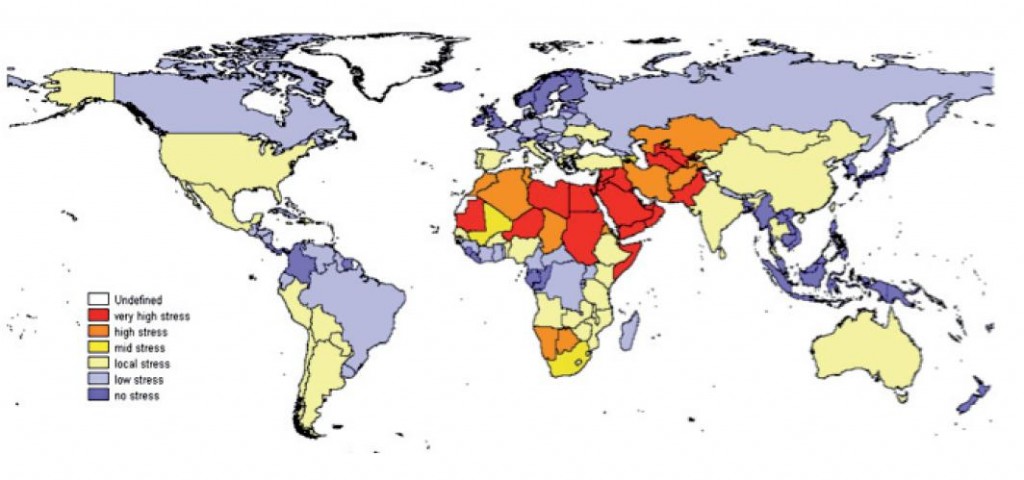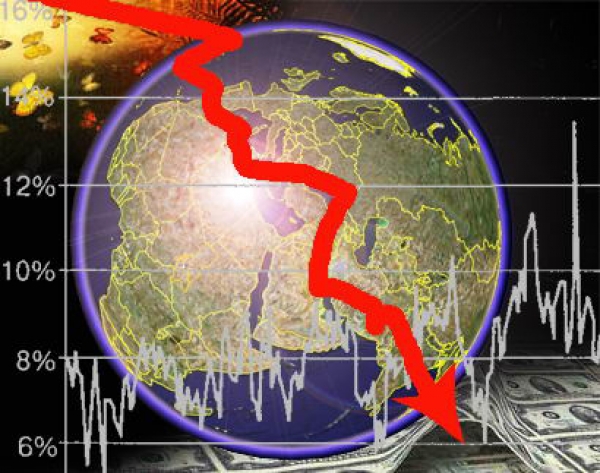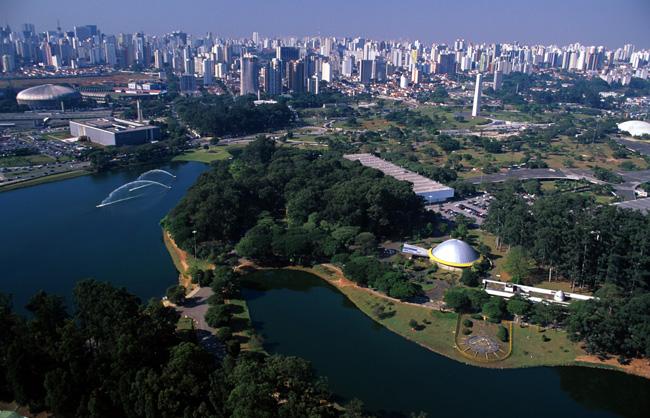Why leave your country and relocate to South America
- Jun
- 04
- Category: Why Brazil
Why leave?
Media, especially which is not controlled by governments/oligarchs, is full with pessimistic scenarios for the world. Probably most of us are aware of government debts, property bubbles or budget deficits. For some reason, 99% of such information is stored somewhere in our brains together with new movie reviews or plastic surgery scandals. Apocalypses may happen, but definitely not tomorrow!“. Well, they might happen faster than you can imagine. Perhaps even tomorrow. Can you exclude?
There have been such events in human history. But have we ever learned. Einstein still has had a reason to say, that ‚ÄěOne of the greatest mistake what people make is that they think that life as they have known it will last through their lifetime.‚Äú. And there are some very statistically highly likely scenarios. Nuclear expert Arnie Gundersen and physician Helen Caldicott have both said that people should evacuate the Northern Hemisphere if one of the Fukushima fuel pools collapses. Gundersen said:Move south of the equator if that ever happened, I think that‚Äôs probably the lesson there. He told 7 mag earth Q is enough to do that, they just had 5,8((( .
Even if this extinction level event may be a remote possibility (estimated chance of this happening is % in one year and % during years, so not so remote anyway), we do know that radioactive air (Jetstream) has hit West Coast of the US soon after the catastrophe and radioactive water is hitting west coast now…so it is extinction level event, just in slow motion. What if those scenarios are not pessimistic? What if they are real? What happens tomorrow if one of these theoretically very possible events (ranging from financial collapse to an EMP attack), will go live? And then you face a question: What should I do, where should I go? Is it time to relocate? I will try to analyze current situation and explain why ‚Äúrelocate Brazil‚ÄĚ may be one of the most popular search combinations soon.
If you recognize the danger, some (hard) decisions need to be made. If you are smart, you make them early ‚Äď it is better to be one ear early than one year late! I remember the story told by my father: In atheist Soviet Union, two Russian guys met in center square of the small city. Hi Ivan, where are you going? Well, I plan to go to church and put a candle for the God! What, we are all atheists here, do you really believe in god? Look, I will go now and put this candle. If he does not exist, how much have I lost? But, if he REALLY IS…‚Äú.
I have put this candle as far as possibility of future crisis goes – I prefer to be prepared. Are you considering as well? Water According to researches of Christian development agency Tearfund and The International Water Management Institute (IMWI), around 700 million people today face water scarcity, and the number of people living in severely water stressed regions is set to rise to: -1.8 billion by 2025; -5 billion by 2050 (almost half of world population) unless serious measures are taken to improve the situation.

On the other hand, per-capita consumption of water resources(actually any resources) in developed countries grows exponentially. Just consider projected time frame (12 years from now, or childhood period for a human) and imagine quarter, and later- half of world population suffering from thirst (water consumption for food accounts 30% of total water consumption). What may happen with the rest of the world? Will it be possible for agricultural countries to maintain yields and production volumes large enough to feed the rest ? Who knows…

‚ÄúWho knows‚ÄĚ- the favorite answer of finance management lecturer (manager of large US hedge fund) at my MBA course in CWRU, when we were discussing currency or futures rates. In developing countries output must be doubled until 2050, implying an increase on average of almost 1.4 percent per year, which means an enormous effort for farmers, agricultural researchers, extension workers, irrigation development, fertilizer industry and infrastructure for input transport and market accessibility. Yes, who knows what will happen to our children‚Ķ

‚ÄúCommunities may no longer grow. Cities and towns risk catastrophic fire because there‚Äôs not enough water to extinguish blazes. Lawns are relegated as a luxury for the rich‚ÄĚ. Guess what does it mean? No, this is not my effort to pressure audience or an excerpt from apocalyptic movie script. This is analytical 5-years scenario for Colorado River basin, suffering from 23 percent increase in water use and loss (stress on the river system), according to U.S. Bureau of Reclamation. The bureau conducted supply-demand study that says residents of Utah and the other six basin states should expect droughts lasting five years or more 40 percent of the time over the next 50 years. Now we hear and read almost weekly about worsening draught in California.
If this region is about to turn to desert (which it historically has been) again, (tens of) billions of peopel will have to be on the move…and you are one of them, where will you go? There really are no answer. Desalination of the water from Pacific? When, for what kind of money? How will you filter Fukushima-fed radioactivity out of this? Summary: it‚Äôs better to be in right region until, that is, water ended. Food Yes, water is becoming the real constraint. Some analysts (Earth Policy Institute in Washington) believe there‚Äôs quite a bit of land that could produce food if we had the water to go with it.
As such, according to FAO statistics from 1961‚Äď2007 cultivated land area increased by about 13 percent from 1 370 million ha to 1 559 million ha, which represent the better and more productive part of the global land resources. Future increase of this share is impossible without such controversial and highly debated measure as deforestation. The global land mass, excluding Antarctica, comprises 13.3 billion ha, including 11% (1.6 billion ha) is currently used to cultivate agricultural crops, as mentioned before; ‚Äď 28% is under forest; ‚Äď 35% comprises grassland/woodland ecosystems; ‚Äď 22% is barren or sparsely vegetated; ‚Äď 3 % each is used for human settlement or infrastructure and occupied by inland water. However, between 385 and 472 million ha, or almost one-third of cultivated land have been abandoned (Campbell et al., 2008) or lost to erosion and continues to be lost at a rate of more than 10 million ha/yr (Pimentel and others, 1995). Such process of land degradation will continue as long as current unsustainable land management practices persist. Which, in turn is more likely, if we re-call necessity to increase food production in line with population growth, by 70 percent globally and 100 percent in developing countries, i.e. by more than a billion tonnes of cereal grains and 200 million tones livestock products.
It IS more likely, when developing countries intensify agricultural production, trying to double food output by 2050. It IS more likely, when use of pesticides, fertilizers, genetically modified organisms will be performing at constantly increasing rate, rather than applying principles of sustainable, organic, permaculture agriculture. Such assumptions can be proven with the following: most developing countries are located in regions, which will be experiencing the largest population growth, have relatively poor quality cultivated land and are lacking possibilities for cultivated land expansion and are void of renewable water resources. These countries have no choice except to overcome resource scarcities with technological improvements. Which finally will turn into use of ‚Äúimproved and innovative‚ÄĚ products of modern chemical industry. At least because most of organizations supporting such ‚Äútechnological improvements in agriculture‚ÄĚ are supported by governments of one developed country, supported by‚Ķ you know‚Ķ
And of course, because sustainable agriculture requires long term investments into technologies, education, seeds, infrastructure. Many countries simply can not afford such investments both in long and short term perspectives. I.e. in many developing countries, agricultural extension and marketing services have declined owing to budgetary constraints and low priority of political support for agriculture. Poor farmers simply cannot access the market because of the lack of infrastructure. Not to mention use of innovative and sustainable agricultural principles. If this draught in California gets worse, what will happen to state’s economy? Worse, what will happen to fruits and vegetables supply of the USA? Use your imagination. California currently produces roughly half of nation’s vegetables and fruits.
Summary: it‚Äôs better to be in right region until, that is, food resources ended. In case of TSHTF scenario, it boils down to basics – either your country (region) has sufficient fertile land, water and energy resources and favorable climate for agriculture…or it does not. If you can name 5 or 6 countries which have more than Brazil ‚Ķ, tell me
As far as food security goes, Brazil could feed twice as big a population than it currently has. Most countries in the world are net food importers. You do not want to be there if TSHTF event happens. Of course, you need to consider many additional aspects, ranging from energy to political and social stability. We will do that in our next article. However, water and food ‚Äď these are of paramount importance. Three days without one or three weeks without another…and you are dead! Why relocate to Brazil Brazil is a good destination for numerous reasons ‚Äď available fertile land, favorable climate and abundant water reserves will never make agriculture unprofitable; not to mentioned guaranteed bread for your and hundreds of your ancestors‚Äô generations; ‚Äď energy independence: from huge and small hydropower stations to ethanol distillers.
What else is very interesting ‚Äď Brazil has almost no natural disasters ‚Äď no earthquakes, tsunamis, volcanoes, tornadoes…sometimes it rains too much but, just one thing is worse ‚Äď when it does NOT rain! According to predictions, most part of Brazil should be more safe even if pole shift happens. A joke? But can you exclude?
We know that Bush family has bought a huge ranch in Paraguay and we know about Doug Casey’s exclusive hideout development in Salta, Argentina (both in South America, hardly a coincidence). I can not argue with his reasoning in his article , but…if you look at the globe, this place is in the middle of the desert. Yes, it has underground water right underneath it so it is an oasis, but still it is surrounded by te desert. I remember reading a comment (I believe it was from Zero Hedge, because this is my most favorite site still) which I am trying to paraphrase: ‚ÄěI remember, when I was a little boy and looking at the globe and trying to figure out the best place to live when I grow up…and I made on firm decision ‚Äď I want to live somewhere, where the globe is colored green!‚Äú. It is easy to figure, why ‚Äď green means food and water.
Well, Brazil is very green! We have studied the topic of strategic relocation very thoroughly and our analysis shows that Brazil should rightfully be a top destination for these people, who are seriously considering strategic relocation.
We have found the best regions in Brazil which could not just survive but even thrive through whatever is about to come. We have successfully invested in farmland and in other businesses in Brazil and we can help you to do the same.
- Close to the beach
- In the mountains
- Top choices
- Life in Brazil
- Invest in Brazil
- Why Brazil
- Visa for Brazil
Archives
- January 2024
- April 2019
- February 2016
- December 2015
- July 2015
- June 2015
- May 2015
- April 2015
- February 2015
- March 2014
- January 2014
- January 2013
- December 2012
- November 2012
- October 2012
- September 2012





